Årsgång – Year Walk In The Forest – Mystical Journey To Gain Knowledge About The Future – An Ancient Swedish Ritual
Ellen Lloyd - AncientPages.com - Can nature provide a person with answers about the future? People in ancient Sweden believed a walk in the forest could foretell future events.
In Sweden, where nature played an important role in daily life, it seemed logical to assume that omen-seekers could acquire knowledge of the following year by visiting the forest. But one had to be very careful because supernatural beings that resided in forests, lakes, and mountains could be harmful.
Image credit: Public Domain
People have always wanted to know what the future will bring for as long as anyone can remember. Many ancient civilizations practiced various forms of divination. In ancient Greece, people relied on oracles where priests and priestesses were believed to have received guidance from Gods in the form of signs or messages that served as prophecies.
Ancient Chinese had their book I Ching – The Book of Changes that was used as an aid to foretell the future and make decisions for thousands of years. Like many other ancient civilizations, Egyptians often relied on dreams to foretell the future. The Egyptian dream book contains 108 dreams and inscriptions on how to interpret the signs that reveal future events.
In Mesoamerica, hallucinogenic plants were used in divination, and people believed creator gods possessed the knowledge of the future.
The list is long, and the belief that we can glimpse into the future is ancient.
Other ancient cultures relied on nature when acquiring knowledge about the future. Forests have played an important role in legends, myths, and fairy tales from all over the world, from the dawn of recorded history.
The Forest was believed to be the seat of ghosts, gods, monsters, or the underworld.
Årsgång – Year Walk In The Forest Was Practiced To Learn About Future Events
In Sweden, a ritual was known as Årsgång, translated as Year Walk. During the Year Walk, visiting the forest on Christmas Eve or New Year’s Eve was a custom. According to Swedish folklorist Tommy Kuusela, this divination ritual dates back to the 1600s. While walking in the dark forest on a cold winter night, the goal was to catch glimpses of what would happen the following year. A person seeking knowledge about the future could gain it by interpreting signs. Still, he mustn’t forget that some of the creatures in the forest were dangerous, and the year walk required discipline and concentration. Without it, a person may never return to the realm of the living.
Dangerous Mythical Creatures Lurking In The Forest
Many Norse mythological creatures were believed to live in the forest, and encountering them could be a scary experience.
In the forest, one could come across Huldra, a seductive female creature who was seen from the front and often had a very beautiful human appearance. However, from behind, she was shockingly ugly with her hallow bark back and a cow’s tail or that of a fox that was almost impossible to conceal. A Huldra could lure a man into her home to marry or kill him.
Avoiding the trolls was also wise because these beings could attract people over a longer or shorter time into their world, the mountains, or the underworld. People who disappeared for a while could return with memory loss and confusion still present after returning home.
The neck as a brook horse by Theodor Kittelsen. Image credit: Public Domain
The brook-horse (bäckahäst) could be seen near rivers, particularly during foggy weather. This mythological animal should not be approached. Climbing onto the back of this gorgeous white horse could result in death because the animal would then jump into the river, drowning the rider and taking the person’s soul as its own.
This is why it was vital to avoid distractions and proceed with caution. During the Yearly Walk, Kuusela explains that “some people went as quietly as possible to the forest, without saying a word: they did not look back and had made sure to stay away from food and drink and avoided looking into fires earlier in the day, and they made sure to be so far away that they could not hear a cock crow. When the sun rose, they were on the church road where the next year’s funeral procession could be seen. They would also see if the harvest would be good or bad by looking at the fields, meadows, and grazing grounds, and they could see if a fire was going to break out during the next year.”
A Year Walker mustn’t laugh, talk or be afraid. Breaking these rules could lead to insanity, loss of an eye, or disappearance.
When a person embarked on this mystical journey through the forest, he should go alone, but it happened that two or three people accompanied each other. They walked silently without speaking to each other. The Year Walk usually started before midnight, and knowledge seekers could gain information through powerful visions. One could learn about future events such as marriage, harvest, and wars, but the most common information was about who would die in the upcoming year.
In Harper’s New Monthly Magazine (1871), A.H. Guernsey wrote that “the pilgrimage begins a little before midnight, and must cease before matins. The pilgrim goes first to fore the matin hour they lose the power of getting odd until one of them had given up his magical hat. The possessor of the Runic tablet and the magic hat becomes thenceforth a great soothsayer, to who all hidden things are revealed without the necessity of getting upon Ars gang.”
See also:
Utiseta – Norse Vision Quest – Ancient Spiritual Tradition Of Northern Europe
As previously discussed on Ancient Pages, runes were ancient inscriptions and Odin's secret language. The Vikings believed runes were created when their chief god Odin speared himself to the cosmic world tree, Yggdrasil, in hopes of receiving secret knowledge. Runes were used to communicate, write, tell fortunes, protect, and cast spells. Runemasters were regarded as experts and trained in understanding and using runes to tell foretell the future and cast spells.
The Year Walk was long considered an effective divination method, but this old Swedish folklore tradition is no longer practiced.
The oldest account of a Year Walk (Årsgång) can be found in a manuscript called Småländska Antiqviteter (Antiquities from Småland), written by Petter Rudebeck (1660-1710). The manuscript is held in the National Library of Sweden.
Updated on December 14, 2023
Written by Ellen Lloyd – AncientPages.com
Copyright © AncientPages.com All rights reserved. This material may not be published, broadcast, rewritten or redistributed in whole or part without the express written permission of AncientPages.com
Expand for referencesTommy Kuusela - The Year WalkRitual in Swedish Folk Tradition
Harper’s New Monthly Magazine (1871), Vol. 42
More From Ancient Pages
-
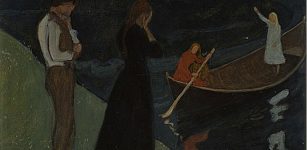 Tuonela – The Land Of The Dead In Beliefs Of Ancient Finnish People
Featured Stories | Nov 9, 2021
Tuonela – The Land Of The Dead In Beliefs Of Ancient Finnish People
Featured Stories | Nov 9, 2021 -
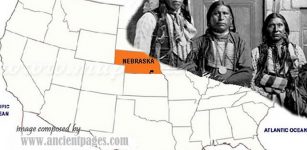 Skidi Pawnee Indians – One Of The Best Sky Watchers Of Ancient Times And Their Star Chart
Civilizations | Jul 5, 2014
Skidi Pawnee Indians – One Of The Best Sky Watchers Of Ancient Times And Their Star Chart
Civilizations | Jul 5, 2014 -
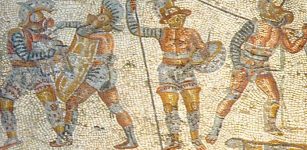 Were There Gladiators In Roman Britain? An Expert Reviews The Evidence
Featured Stories | Mar 14, 2023
Were There Gladiators In Roman Britain? An Expert Reviews The Evidence
Featured Stories | Mar 14, 2023 -
 Mediterranean Sea Was Hotter 2,000 Years Ago And Contributed To The Fall Of The Roman Empire
Archaeology | Jul 27, 2020
Mediterranean Sea Was Hotter 2,000 Years Ago And Contributed To The Fall Of The Roman Empire
Archaeology | Jul 27, 2020 -
 Homo Bodoensis Is A New Species Of Human Ancestors Who Lived Half A Million Years Ago
Archaeology | Nov 1, 2021
Homo Bodoensis Is A New Species Of Human Ancestors Who Lived Half A Million Years Ago
Archaeology | Nov 1, 2021 -
 Where Is The 12,000-Year-Old Map That Could Change All We Know About Ancient Egypt Hidden?
Featured Stories | Mar 21, 2021
Where Is The 12,000-Year-Old Map That Could Change All We Know About Ancient Egypt Hidden?
Featured Stories | Mar 21, 2021 -
 Bona Sforza – Ambitious Queen Of Poland Was Betrayed And Murdered
Featured Stories | Jan 21, 2019
Bona Sforza – Ambitious Queen Of Poland Was Betrayed And Murdered
Featured Stories | Jan 21, 2019 -
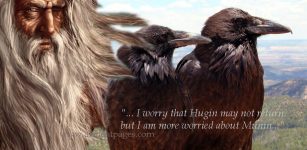 Huginn and Muninn: Powerful Ravens Of Odin, Supreme God In Asgard In Norse Mythology
Featured Stories | Dec 7, 2017
Huginn and Muninn: Powerful Ravens Of Odin, Supreme God In Asgard In Norse Mythology
Featured Stories | Dec 7, 2017 -
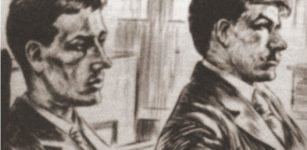 On This Day In History: The U.K.’s First Murder Case Solved By A Fingerprint – On March 27, 1905
News | Mar 27, 2017
On This Day In History: The U.K.’s First Murder Case Solved By A Fingerprint – On March 27, 1905
News | Mar 27, 2017 -
 7.2-Million-Year-Old Pre-Human Remains Suggest Our First Ancestor Came From Europe Not Africa
Archaeology | May 23, 2017
7.2-Million-Year-Old Pre-Human Remains Suggest Our First Ancestor Came From Europe Not Africa
Archaeology | May 23, 2017 -
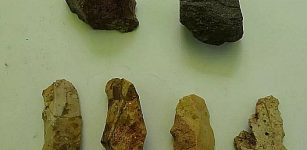 İnkaya Cave Study Brings To Light 86,000-Year-Old Traces Of Human Life
Archaeology | Aug 22, 2023
İnkaya Cave Study Brings To Light 86,000-Year-Old Traces Of Human Life
Archaeology | Aug 22, 2023 -
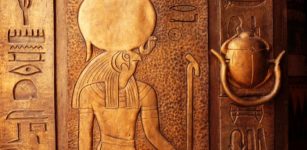 Sun God Ra Was Venerated In Every Age Of Ancient Egypt’s Long Dynastic History
Egyptian Mythology | May 3, 2021
Sun God Ra Was Venerated In Every Age Of Ancient Egypt’s Long Dynastic History
Egyptian Mythology | May 3, 2021 -
 Controversial Atacama Skeleton Is Not An Alien – DNA Study Reveals
Archaeology | Mar 23, 2018
Controversial Atacama Skeleton Is Not An Alien – DNA Study Reveals
Archaeology | Mar 23, 2018 -
 Unexplained Mystery Of The Untraceable Stone-Throwers – Strangeness In Australia And New Zealand – Part 2
Featured Stories | Nov 13, 2019
Unexplained Mystery Of The Untraceable Stone-Throwers – Strangeness In Australia And New Zealand – Part 2
Featured Stories | Nov 13, 2019 -
 Your Neanderthal Genes May Prevent You From Metabolizing Drugs Efficiently
Archaeology | Jul 25, 2022
Your Neanderthal Genes May Prevent You From Metabolizing Drugs Efficiently
Archaeology | Jul 25, 2022 -
 What Can Ancient Toilets Teach Us About Maya Life And Tamales?
Archaeology | Jun 9, 2022
What Can Ancient Toilets Teach Us About Maya Life And Tamales?
Archaeology | Jun 9, 2022 -
 Europe’s Largest Predatory Dinosaur Unearthed On The Isle Of Wight
Archaeology | Jun 11, 2022
Europe’s Largest Predatory Dinosaur Unearthed On The Isle Of Wight
Archaeology | Jun 11, 2022 -
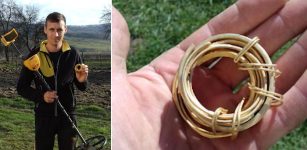 7 Magnificent Thracian Gold Bracelets Found In Romanian Forest By Amateur Archaeologist
Archaeology | May 23, 2023
7 Magnificent Thracian Gold Bracelets Found In Romanian Forest By Amateur Archaeologist
Archaeology | May 23, 2023 -
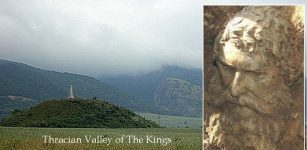 Valley Of Thracian Kings With More Than 1,500 Ancient Burial Mounds
Artifacts | Dec 10, 2018
Valley Of Thracian Kings With More Than 1,500 Ancient Burial Mounds
Artifacts | Dec 10, 2018 -
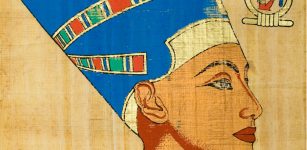 What Happened To The Mysterious And Beautiful Queen Nefertiti?
Featured Stories | Apr 4, 2017
What Happened To The Mysterious And Beautiful Queen Nefertiti?
Featured Stories | Apr 4, 2017



